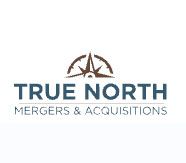What Is the Difference Between an IOI and a LOI?

True North Mergers & Acquisitions
April 24, 2025

How an Indication of Interest and a Letter of Intent Serve Distinct Roles in an M&A Transaction
When a high-quality business enters the market, it generates significant buzz and buyer interest. To effectively manage this enthusiasm and bring clarity to the process, it is crucial to formalize potential offers through written and detailed documents. These documents play a vital role in translating buyer interest into concrete proposals, adding structure and detail to the M&A transaction process.
Two key documents in this process are the Indication of Interest (IOI) and the Letter of Intent (LOI). While the title of these documents suggests their function, understanding the nuances of both IOIs and LOIs is important for every business owner to know to understand the sale process, evaluate potential buyers' intentions, and strategically position their company to maximize their life's work.
This blog dives into what these documents are, how they differ, and how they can impact the exit of your business.
The Indication of Interest (IOI)
Following the teaser's review, a prospective buyer, if interested, will send out an IOI to the seller's advisors. At the center, an IOI is a potential buyer's high-level inquiry on the business in the form of a one-to-two-page document. It serves as an initial, non-binding expression of interest from targeted potential buyers. There will often be a broad valuation range included after they have been given minimal disclosures about the financial and operational functions of the business. This is why a buyer later submits a LOI with more detail included.
An IOI aims to see if there is an initial alignment of values between the two parties, including aspects such as the multiple of EBITDA. It is often used as a tool for gauging market interest and filtering and facilitating serious prospects into the QuietAuction™ process.
For sellers, receiving an IOI validates the appeal of their business in the market and opens the door to further discussions that bring them one step closer to the closing table.
For buyers, an IOI acts as a formal declaration of their interest in pursuing a potential transaction.
The Letter of Intent (LOI)
After an IOI is submitted, more information is released, and the pool of potential buyers is narrowed. This is then when the potential buyers that are left submit a Letter of Intent. A LOI represents a more committed step, presenting a specific valuation and detailed transaction terms. It often includes binding elements like exclusivity periods and confidentiality agreements, signaling the buyer's intent to proceed with due diligence and negotiations.
Potential buyers may use the LOI to differentiate themselves from others. The potential buyers have also likely conducted preliminary due diligence or been apart from meetings with the current management. Exclusive periods that may be detailed in an LOI allow for more in-depth conversations, allowing both sides to get to know one another in greater detail.
The LOI is often used to establish a framework for a draft of the definitive purchase agreement.
Competitive Tension in The QuietAuction™ Process
The progression from IOI to LOI marks a significant shift in the deal's momentum, with the LOI setting the stage for more intensive financial scrutiny and focused discussions. This is a part of True North Mergers & Acquisitions (TNMA) QuietAuction™ process.
The QuietAuction™ is a structured sale process designed to facilitate company transactions efficiently and discreetly. This method involves a carefully targeted group of qualified buyers and adheres to a strict timeline. Key steps include thorough preparation, targeted selection of potential buyers, secure information dissemination under non-disclosure agreements, and strategically managed bidding rounds—through IOIs followed by comprehensive LOIs.
These two documents help maintain the momentum of a deal as they are often required to be submitted by deal-specific deadlines. During discussions involving the IOI and LOI, confidentiality is critical as sellers will disclose sensitive business information during these milestones.
Utilizing the two documents as milestones offers distinct advantages, such as improved confidentiality, a higher caliber of prospective buyers, and a competitive environment leading to higher valuations and favorable deal terms. Engaging experienced advisors like those at True North M&A can be crucial for navigating this sophisticated process successfully.
Maximizing Value Through Expert M&A Professionals
Collaborating with True North Mergers and Acquisitions offers expert guidance through the M&A transactions with IOIs and LOIs, moderating between you and potential acquirers. By leveraging our proprietary QuietAuction™ process, tailored to your goals, you streamline the negotiation process and optimize your net after-tax proceeds. To maximize your life's work, contact Michael Hubsmith, president of True North M&A, to find trusted advisors who will champion your interests and help you prepare for the exit of your business.
Subscribe to our Newsletter
Sign up for the latest industry insights from True North Mergers & Acquisitions.



